Norway was the first country to execute the Drama Labs, which took place in the city of Drammen in the beginning of May 2023. The Norwegian research and drama team was working with representatives from Drammen municipality in an area (Bragernes) very close to Drammen city centre. The area is about to undergo a major transformation as the hospital located in the area will move to another part of Drammen. The big questions concern what will happen at the soon-to-be former hospital site which is characterized by a huge modernist concrete tower block. Will the tower block be demolished or kept? What new functions will the planned development accommodate and what will be the consequences for the surrounding area?
The Norwegian Drama Lab did not aim to provide an answer to these questions, but rather to broaden the understandings of the very different – and possibly clashing and contradicting – interests, perspectives, visions and ideas that might constitute, shape and direct the urban transformation process. The hope was that broadening these understanding would also broaden our scope of actions and construct new ways of moving forward together.
To do this, the Norwegian Drama Lab took as its starting point the question of whether the modernist tower block of the hospital should be demolished or kept as part of the new development. But instead of searching for a consensus around the “right” answer, the Drama Lab set out to explore the potential tensions and conflicts that might arise between these two positions: that of demolishing the hospital and that of preserving it.
This was done through performative conversations and experiences that took place at Børresen school, which is located right next to the hospital site and in the actual area that is going to be transformed. Participants included local residents, people from the municipality, representatives from the developers that had bought the site, politicians and citizens of Drammen in general. The event was facilitated by five trained guides.
The Drama Lab unfolded as follows:
1) Welcome
The participants are greeted by a guide serving snacks. Everyone receives a drink served in a porcelain cup. This is a way of providing a warm welcome, a gift that sets the tone: “Thank you for coming and for choosing to spend your afternoon together with us!”

2) Establishing relationships to the development area
Participants are asked to sit down successively in a circle around a map of the area. The map is sown onto a large piece of fabric which covers the entire room. The guides moderate conversations about the participants’ personal relationship to the area: What connection do they have to this place? What is your favourite place? When their cups are empty, participants are invited to place their cup on a place on the map that means something special to them. If they wish, they can also share why they have chosen to place the cup there.

3) Opening speech
The guides welcome the whole group and give an introduction to what ByLab is. Emphasis is placed on building a new model for participation where differences and disagreements are at the centre. The goal is not a concrete result or input to the planning process, but to have conversations together that can facilitate getting to know each other and the area in new ways. The focus on play and role change is also emphasised: we should play with points of view and positions that are not necessarily our own.
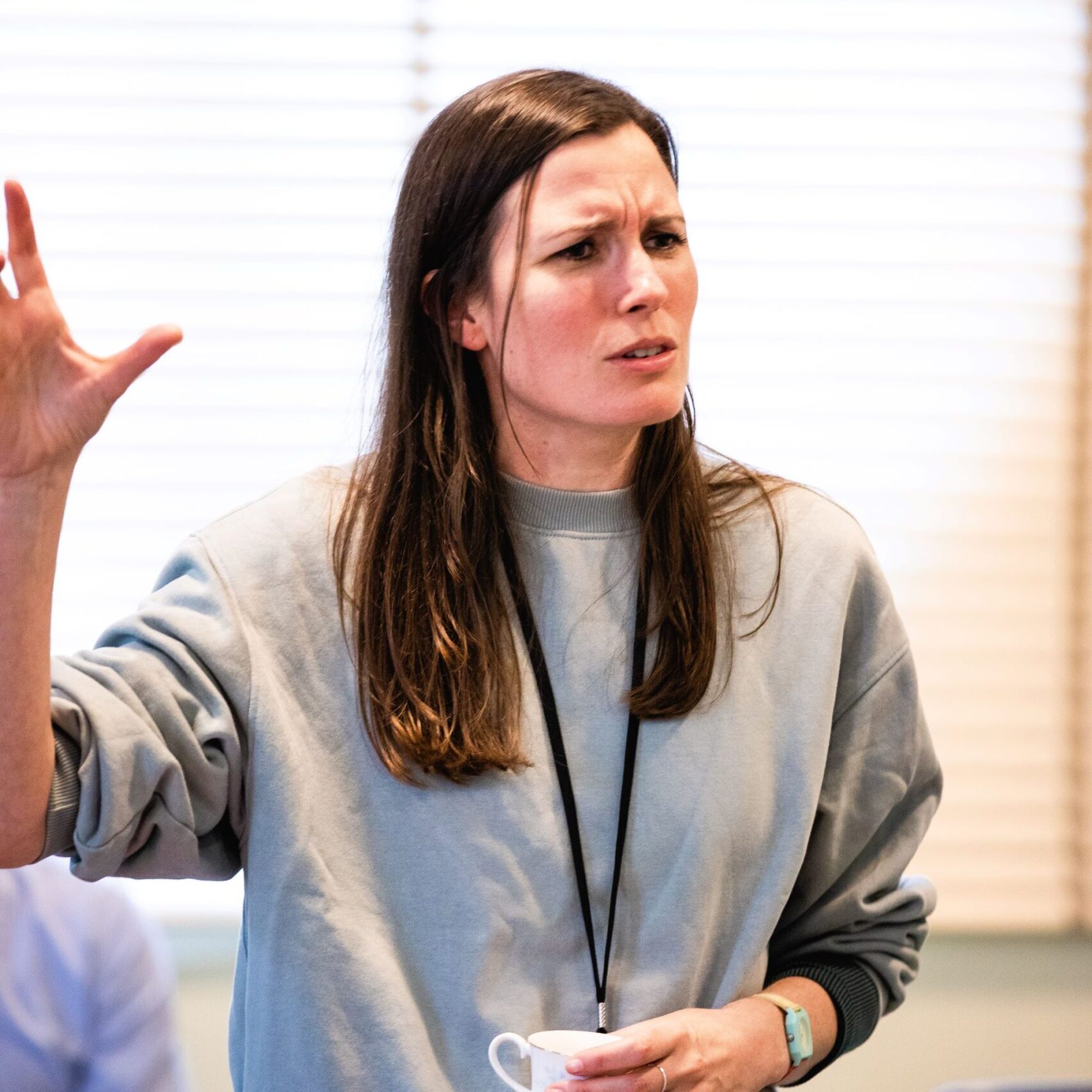
4) Audio walk in the area
The participants go on an audio walk in the area. Here, they listen to what the different things, buildings, nature and places in the area think about the change the area will go through. Colin Carpark talks about the fear of a car-free
city centre, Betty Bike Rack emphasises the importance of bikes and the road as a meeting place, The Old Power Station is proud being a cultural monument that preserves history, and Matthew McDonald the take-away bag, dreams of a
place where young people can hang out, etc.
The audio walk ends with the participants being asked what their thoughts are about the transformation of the area. They answer a series of questions by positioning themselves on opposite sides of the road: Do you feel at home in
this part of Drammen? Do you feel that you have agency concerning the development of this area? The final question asks participants to consider whether they want to demolish or preserve the hospital. To answer, they take a stand
on opposite sides of a line drawn in the schoolyard. After the participants have chosen sides, they are divided into two groups that go to separate echo chambers, located in the basement of the school.
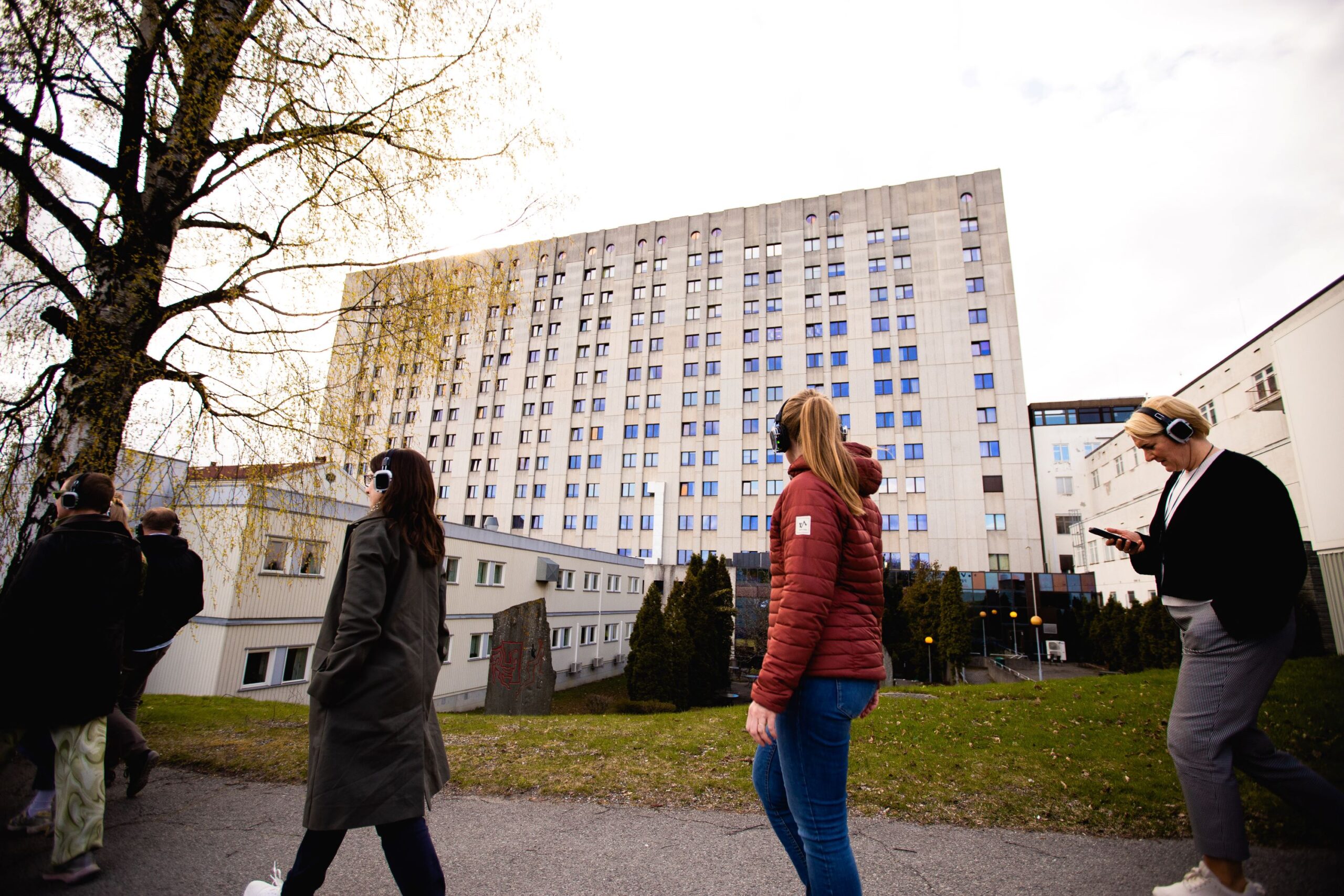
5) Echo chambers of demolition or preservation
The participants become enthusiasts for each their perspective: the demolition enthusiasts and the preservation enthusiasts. Inside their own echo chambers, the role is further explored: Who are ‘we’ who wants to demolish/preserve the hospital? Why is this so important to us? During the conversation, the guides write down on small cards statements from the participants that support why their perspective is the right one.
After arguments have been collected, the participants embody their perspectives. The demolition enthusiasts smash the cups that were placed on the map during the Welcome. The preservation enthusiasts repair broken cups using the Japanese art of preservation called ‘kintsugi’. They then place the cards with the arguments and the broken/repaired cups around the room – in an installation that they think best represents their perspective. They then leave the room to visit the echo chamber of the other group.
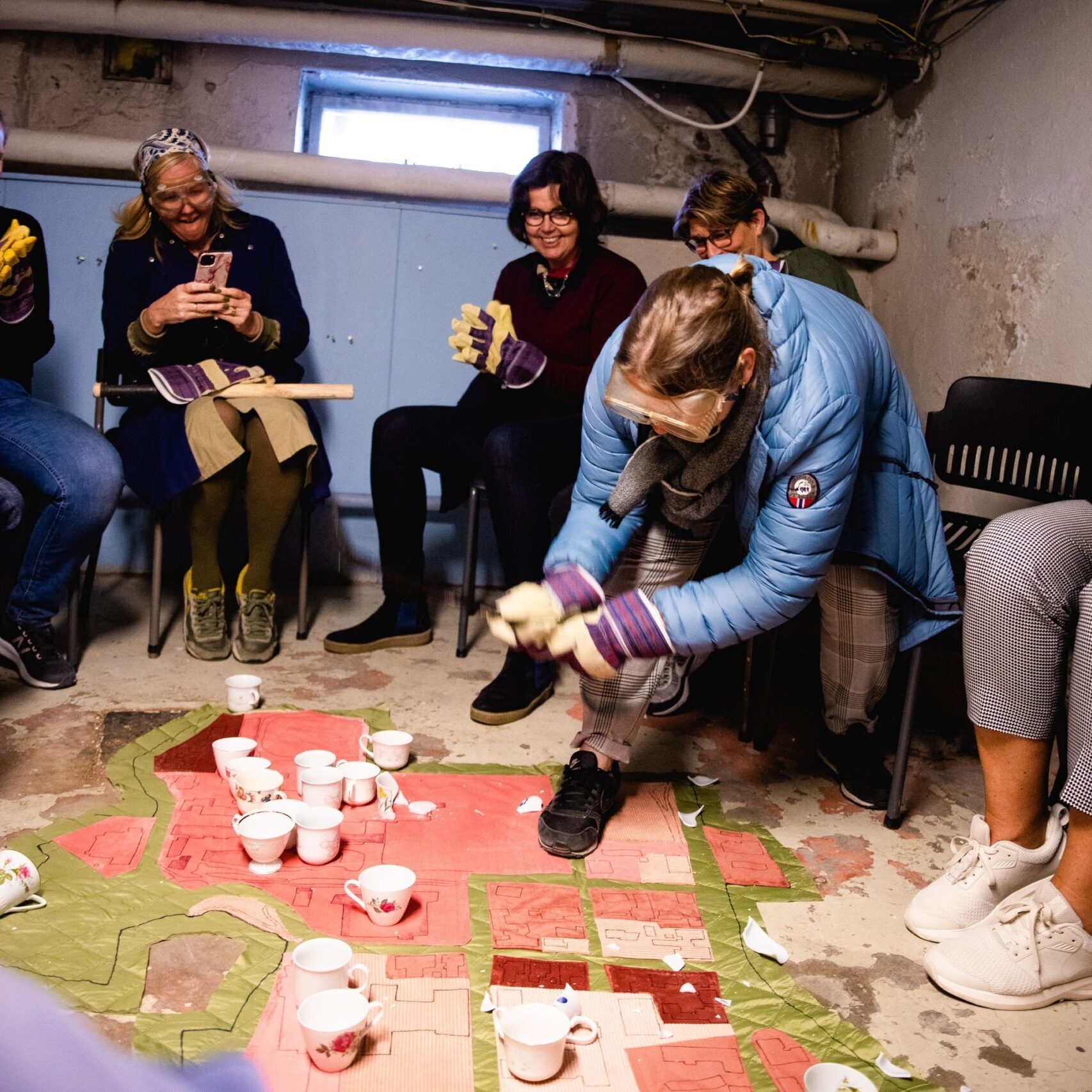
6) Introducing the rules of the game to come
The two groups pass each other in silence and enter each other’s echo chamber to see how the other party has cultivated their perspective. Then they are introduced to rules of the next part of the lab which is a battle between the two perspectives of demolition and preservation. After the rules of the game are introduced, each group goes to the battle arena.
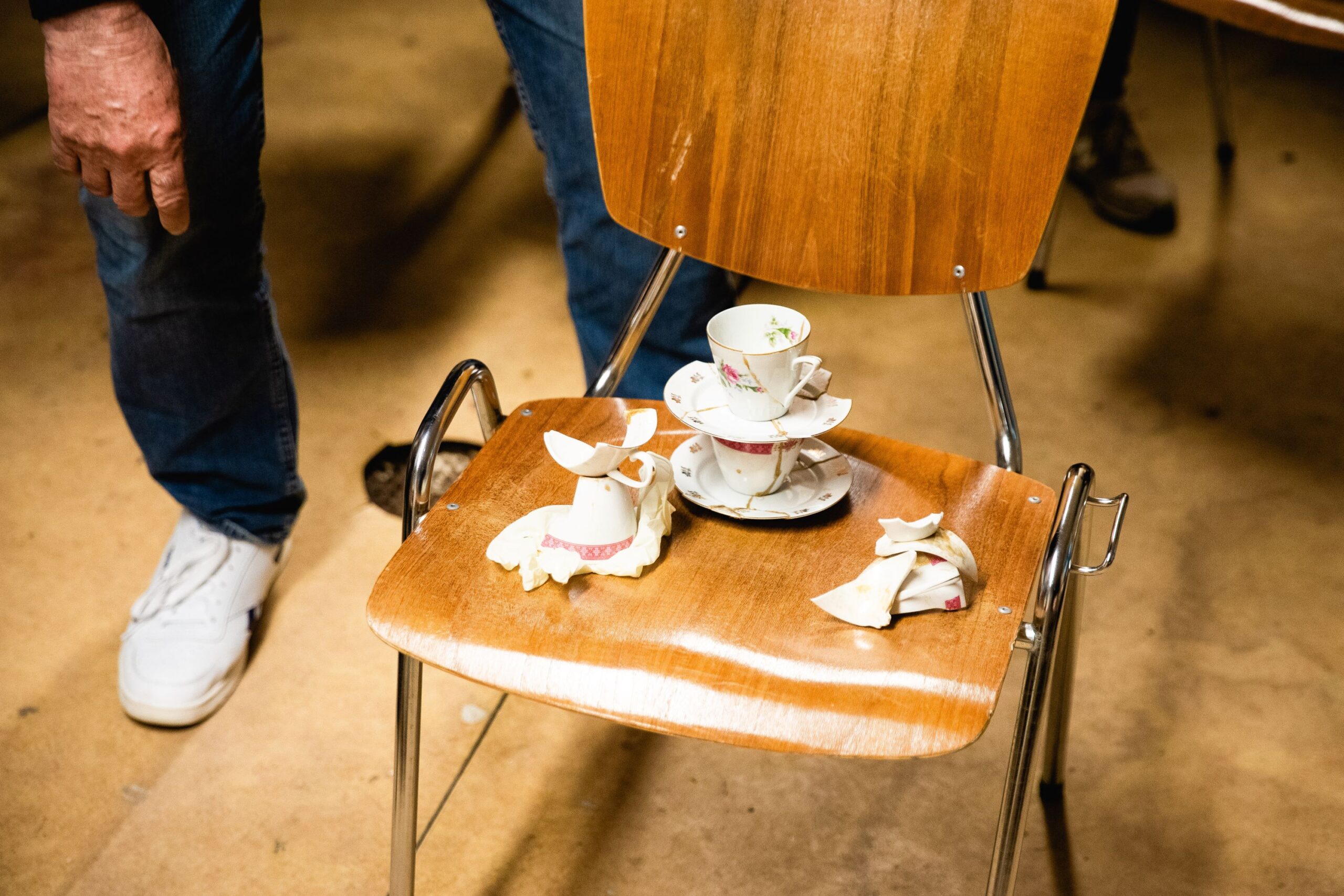
7) The battle
The participants face each other in two groups and point out the disagreements between them in the form of statements that start with ‘we’ or ‘you’. Participants speak only on behalf of their group and the perspective they represent. It is not a goal to answer the statements of the opponent, and participants are instructed to listen to the statements and then let them go. The battle is concluded after 15 minutes by all contestants leaving their role as preservation or demolition enthusiasts, and thanking each other for the battle with a high five.
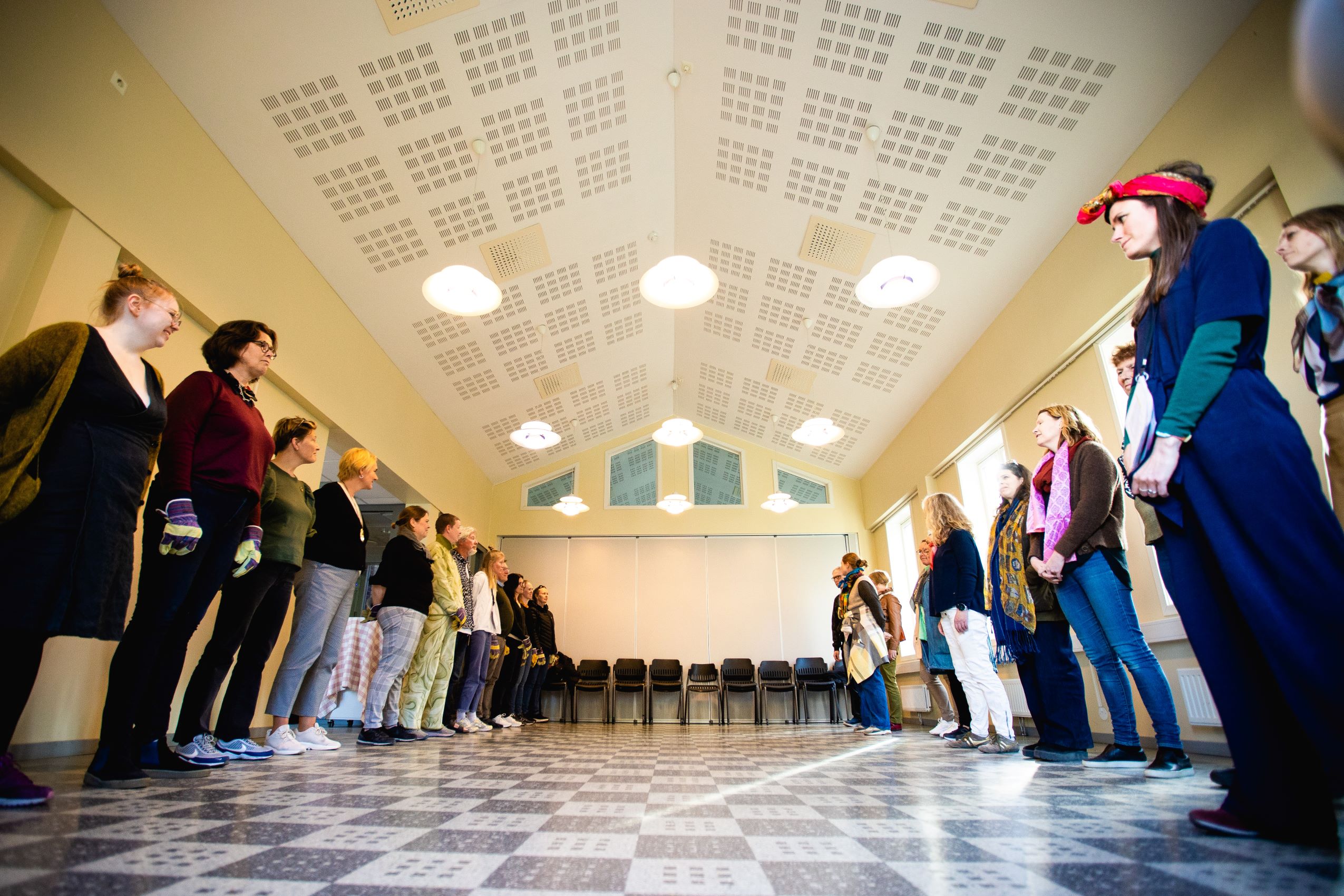
7) Circle conversation and final meal
The participants each take a chair and form a circle with their backs towards each other and their faces facing outwards. The guide asks them to speak from their own personal perspective and share their thoughts, reflections and experiences from what they have experienced in the ByLab. Every input should start with ‘I’ to ensure a personal approach. After 15 minutes, the guide ends the conversation and points out the importance of what we have done here today. It also points to the way forward: what impact will this have on further work regarding the area? Finally, the guide invites the participants out into the schoolyard. Here, more thoughts from the day can be shared in a more informal setting, over bowls of soup and drinks.







